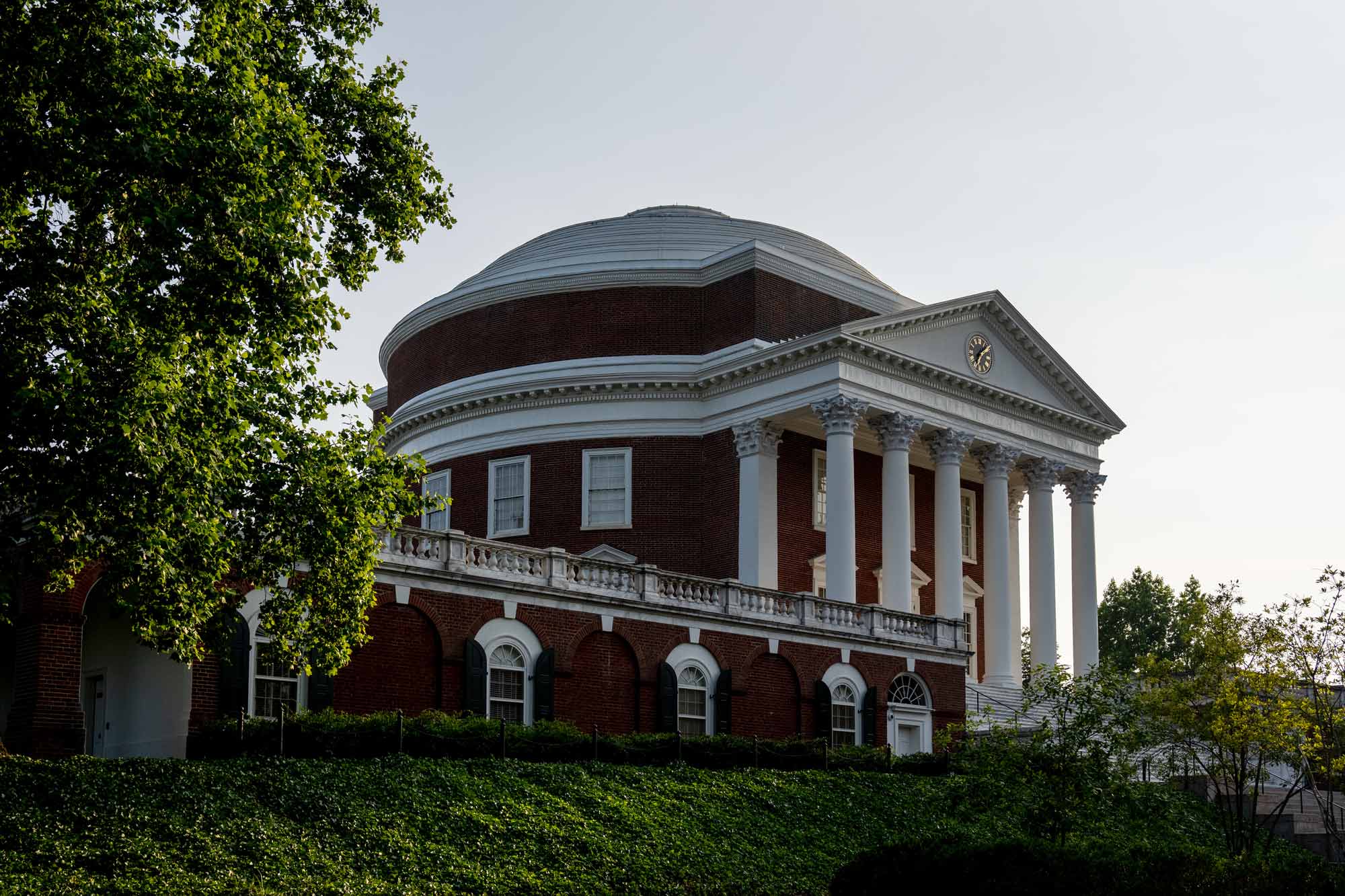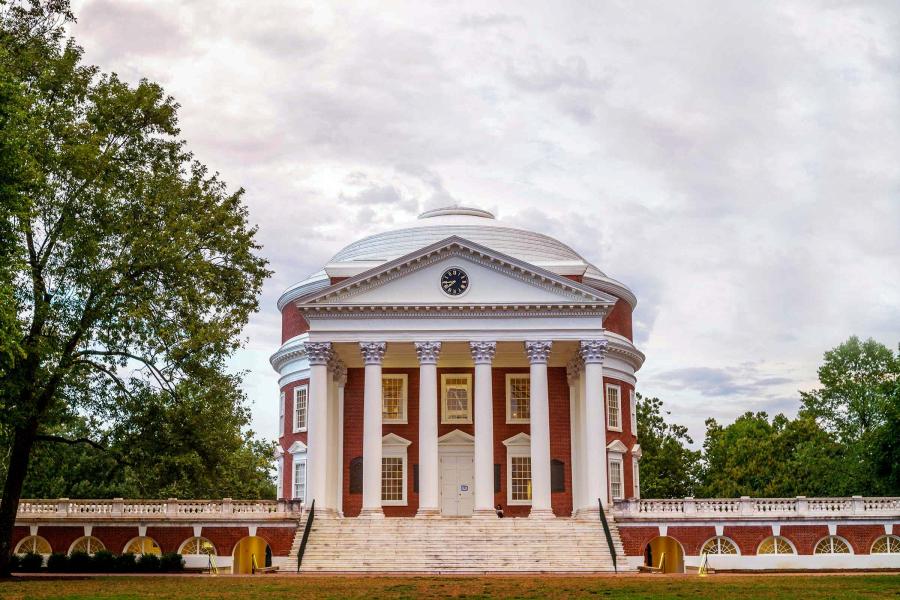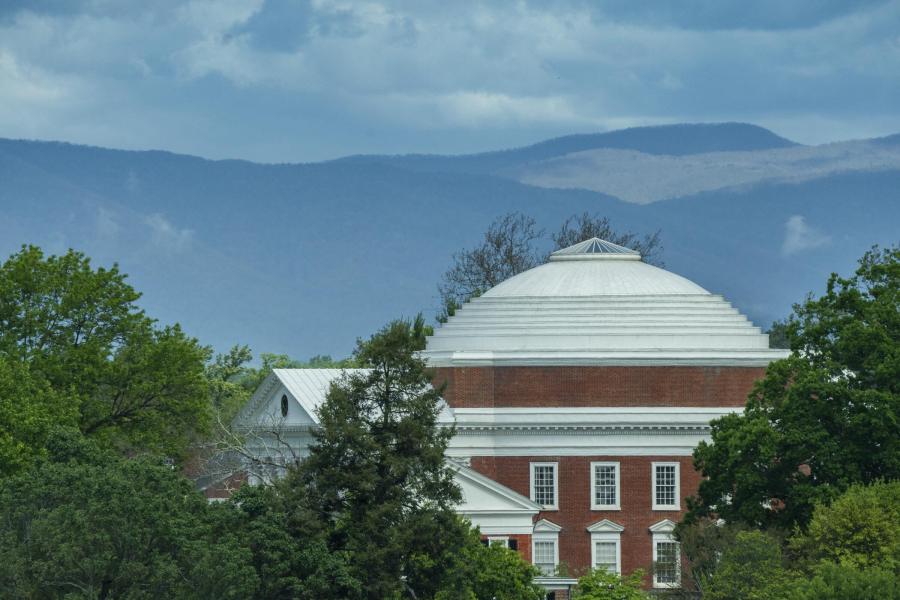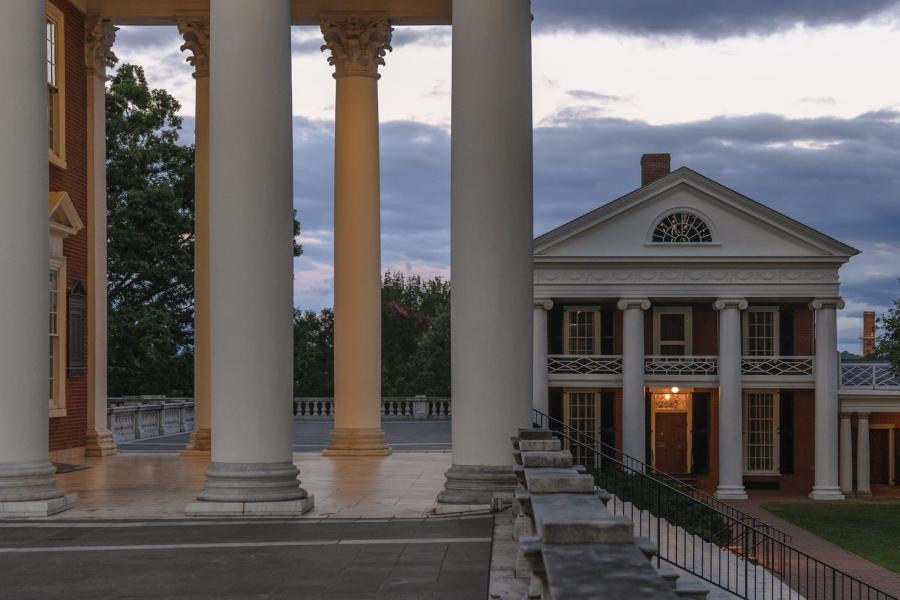University of Virginia President Jim Ryan and other senior leaders convened an hourlong virtual town hall Tuesday afternoon to share new details and an expanded timeline on the protest that began April 30 and was broken up by police five days later.
Virginia State Police cleared the encampment Saturday after demonstrators violated University policies and resisted University and police efforts to get them to comply.
Ryan opened the town hall, saying, “What happened Saturday was deeply upsetting for many of us, and far from the resolution I or any of my colleagues had hoped for.”
Kenyon Bonner, UVA’s chief student affairs officer, said University officials had no warning before April 30 that a group was planning an encampment.
He stressed that he and others in the Office of Student Affairs have had ongoing, cordial and productive conversations with Jewish, Palestinian and Muslim students since the war in Gaza started in October, but the students at the encampment were not part of that group.
“What we experienced with the encampment since Tuesday and particularly on Saturday, (was the) polar opposite of the activity that the other student organizations have done on Grounds,” Bonner said.
UVA Police Chief Tim Longo said he and his officers, along with University representatives, visited the encampment several times last week, starting when tents first appeared on April 30. Over the course of those visits, demonstrators consistently refused to speak with University administrators, he said. Faculty members acted as go-betweens, and after police told a liaison on April 30 that tents were not allowed, demonstrators took them down.
On Wednesday of last week, police and Facilities Management workers intercepted a group of people bringing in construction materials, ostensibly to create fortified barricades. University officials convinced the group – through a faculty liaison – to remove the material, and demonstrators complied.
On Friday, Longo said, the tents reappeared, and this time the demonstrators indicated they were no longer willing to comply with University policy. He also noted that four men entered the camp overnight wearing helmets and other tactical gear. Two were known to law enforcement for their participation in prior demonstrations that had turned violent.
Longo said he, a deputy chief and a member of the Office of Student Affairs staff on Saturday morning tried once again to get the group members to follow University rules. The chief said the demonstrators were more aggressive and made it clear they would no longer comply. Longo said it was obvious from the demonstrators’ words and actions they were preparing for a confrontation.
As a result, the police disengaged and returned to the command post.
Around 11:45 a.m. on Saturday, Longo said, University and local officers returned to the demonstration. After an extended conversation with a faculty liaison, Longo said a police captain used a megaphone to again ask the group to disperse, but the members refused.
“When the arrest team went in, numerous people locked their arms and refused to separate,” Longo said. They arrested one person and then officers “initiated a second re-entry” and “were met with the use of umbrellas in an aggressive manner. At least one person swung their hands in the direction of officers and one officer was actually struck.”
Longo said most of the officers were without protective gear and the risk of injury was high.
“We requested that the Virginia State Police activate a tactical field force to do a controlled operation,” Longo said. “It took quite a bit of time for the tactical field force to respond. By the time they did, hundreds (of observers) had come to the area, surrounding it.”
Longo said that once state troopers were on site and prepared, police asked the demonstrators to leave seven times, without response. Longo said state police did not use any type of tear gas at his insistence, but did deploy pepper spray.
UVA Chief Operating Officer Jennifer “J.J.” Wagner Davis shared that 27 people were arrested Saturday afternoon.
“Twelve of them were students,” she said. “Eight were unaffiliated, not related to or part of UVA – either students, faculty or staff. I think of particular note (is) one of the eight unaffiliated was also charged with assault.”
She said four UVA employees were arrested, along with three others who were former students or employees.
Longo also said this week he has modified the no-trespassing orders for the arrested UVA students so they could return to their housing on Grounds, take final exams and, for graduating students, participate in Final Exercises.
Ryan, in responding to a question posed by a town hall viewer, said he, Provost Ian Baucom and other senior leaders were on Grounds at a command center monitoring the event in real time. In answering another question, Ryan said he did not approach the demonstrators on Saturday because “my view was that my presence would inflame the situation, rather than de-escalate it.”
Ryan also clarified ongoing questions about the tent policy, and why online University documents were edited Saturday morning. He said it has been a longstanding policy that all tents need permits to be on University property, but the application for a tent permit – not the policy itself – had language that seemed to allow camping tents.
“So someone on our team, and I am not sure this was the right judgment at 9:30 or so on Saturday, decided to remove that so that those rules were consistent with policy,” Ryan said.
Two policies prohibit the tents, Ryan added, and further, the tents were erected too close to buildings, too close to each other and under trees, violating several rules.
Additionally, Longo said, the demonstrators were told on several occasions the tents were not allowed. At first, the group disassembled the tents to comply with policy, but later, after erecting tents once more, told police they would not comply with the University rules.
In closing, Ryan said he understands the way the demonstration ended has caused pain for a lot of people.
“So, I have been president for six years, and my colleagues and I have worked quite hard to build a level of trust with students, faculty, staff and members of the broader Charlottesville community,” he said. “I am fully and painfully aware that we lost some of that trust on Saturday, and that it’s very difficult to regain trust. At the same time, I have an obligation as a president to make decisions that I think are in the best interests of the entire community, not one segment of it. And that includes making decisions that others vehemently disagree with.
“Those decisions,” he continued, “like the ones we had to make on Saturday, are no-win situations because some will always question them, but they have to be made. And I have always tried to make them based on principle and based on what I perceive to be the best interest of the community. Once you make a decision, you have to own it. And you face the personal and professional consequences, which I appreciate and fully accept.”
He concluded: “But (what) I cannot and will not accept, though, is the suggestion I have heard from some that I don’t care about students. I care about each and every one of them, including those in the protest and those arrested. I don’t agree with all the choices and decisions that they made, but I nonetheless care about them. … Anyone who has been watching for the last six years would know that, and that will never change.”



